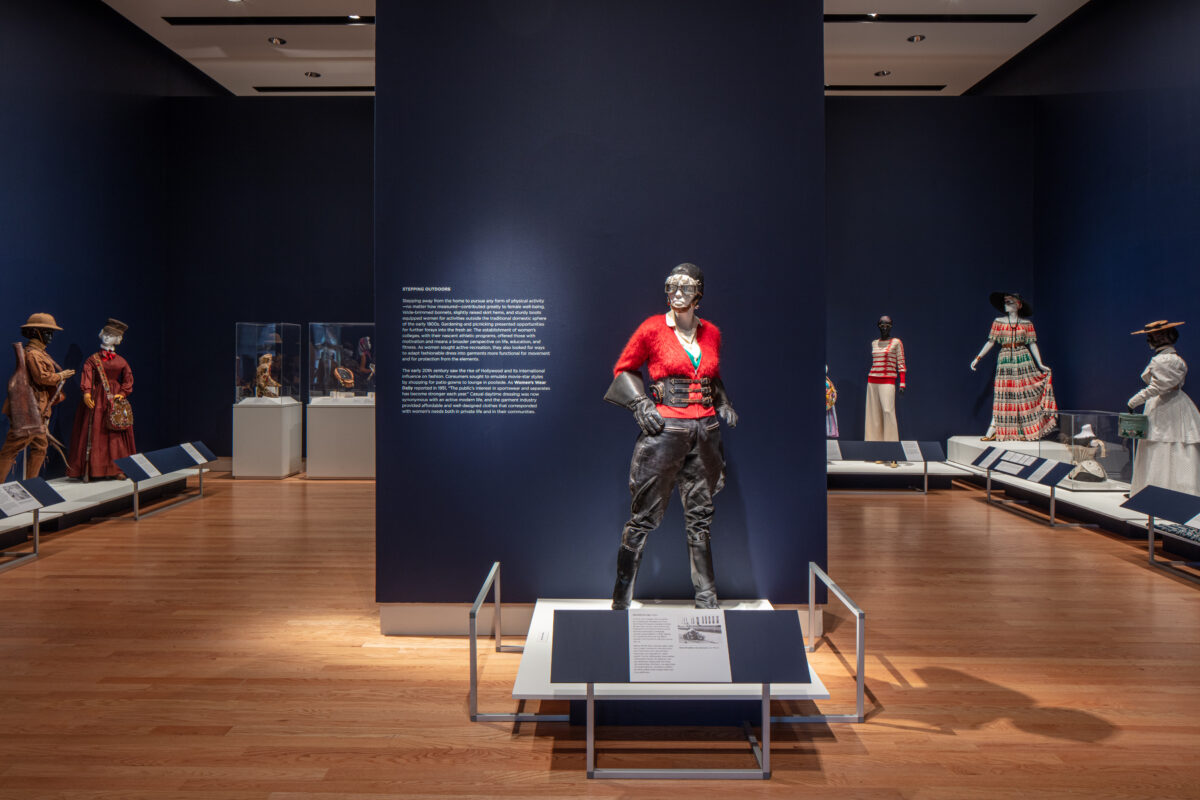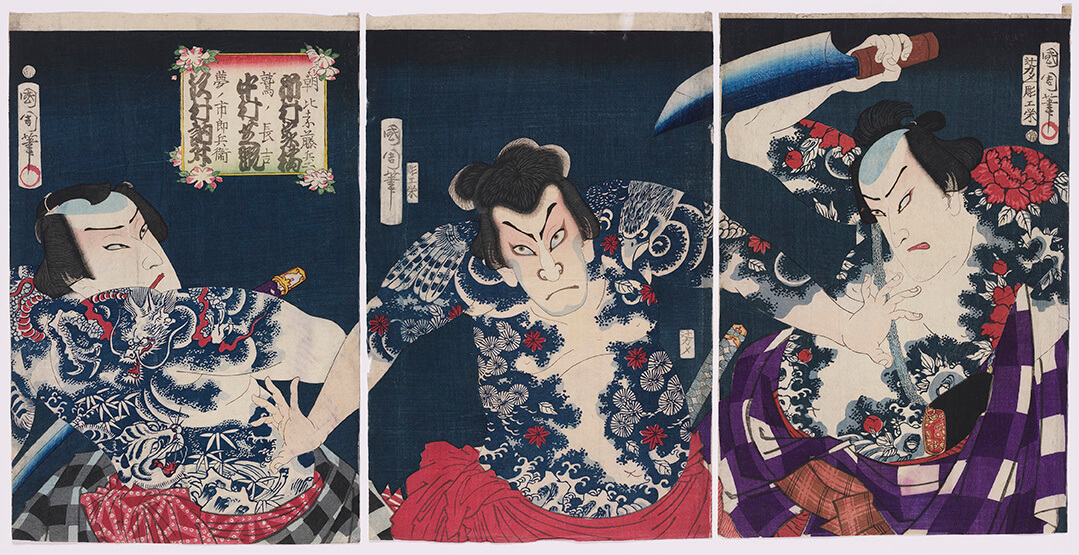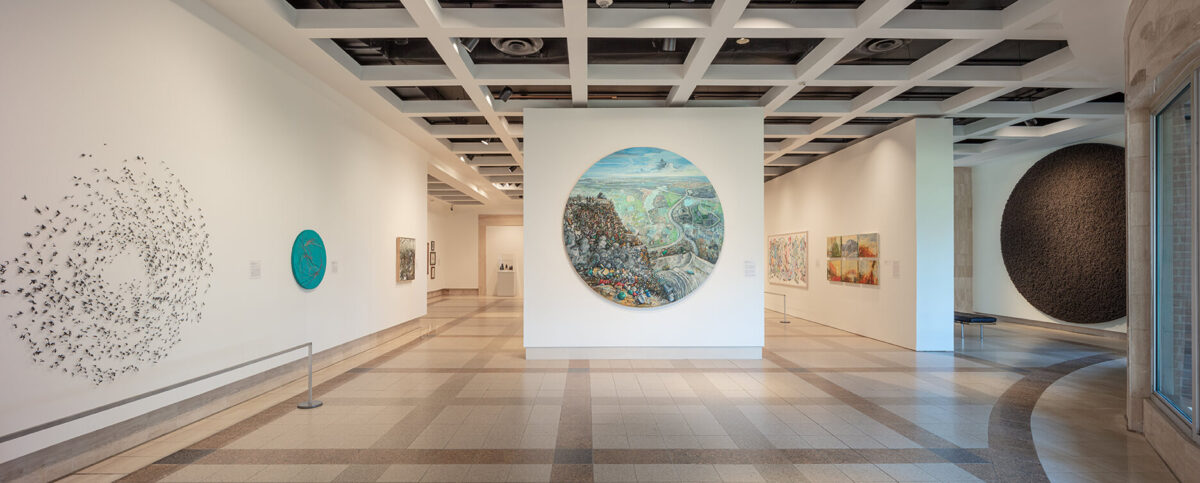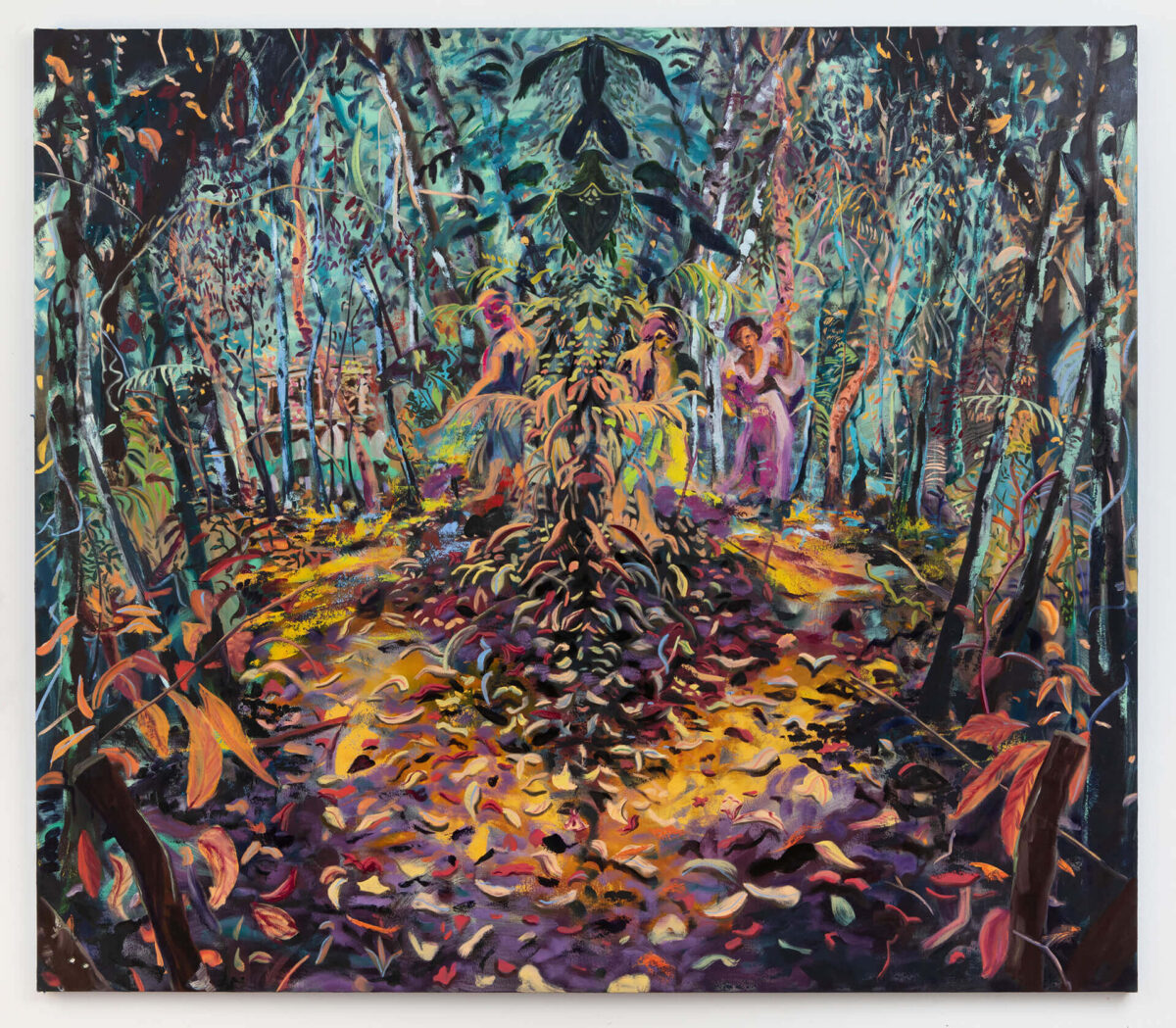Sporting Fashion: Outdoor Girls 1800 to 1960
The first exhibition to explore the evolution of women’s sporting attire in Western fashion, Sporting Fashion will look at the extraordinary impact of new technologies and evolving social mores on women’s clothing for sport. Inspired by a circa 1946 wool scarf inscribed with the word “Outdoorgirl” and featuring illustrations of women engaged in thirteen different sporting activities, this exhibition will chart the cultural and material developments that allowed women to make their way outdoors.
Examining the competing priorities of style, function, and propriety, Sporting Fashion will reconstruct a material history of women in sport through the garments and accessories that enabled them to participate, compete, and excel. 19th-century bathing and bicycling garments alongside 20th-century apparel for boxing and airplane piloting demonstrate the modernity, individuality, and mobility of the “new woman” and connect to women’s continued fight for equality.
This exhibition is organized by the American Federation of the Arts and FIDM Museum at the Fashion Institute of Design & Merchandising, Los Angeles. Support for the national tour is provided by the AFA’s Gold Medal Circle: Elizabeth Belfer, Stephanie Borynack Clark, Ashleigh Fernandez, Lee White Galvis, Stephanie R. LaNasa, Merrill Mahan, Clare E. McKeon, Jennifer New, Angela Timashev, and Victoria Ershova Triplett.
2024 Cummer Museum of Arts & Gardens Exhibition Presenters include: Season Presenters – City of Jacksonville, Cultural Council of Greater Jacksonville, and Ronald and Karen Rettner; Presenting Sponsor – State of Florida; Lead Sponsors – The Robert D. Davis Family Endowment and The Schultz Family Endowment; and Celebrated Sponsors – The Jaguars Foundation, The Van Vleck Family Foundation, A Generous Anonymous Donor and the Director’s Circle Donors at the Cummer Museum.
Images:
Skiing ensemble, 1930s, ©FIDM Museum, Courtesy American Federation of Arts, Photo: Brian Davis.
Motorcycling ensemble, 1930s, ©FIDM Museum, Courtesy American Federation of Arts, Photo: Brian Sanderson.
Inline skating, 1890s, ©FIDM Museum, Courtesy American Federation of Arts, Photo: Brian Davis.
Cheerleading ensemble, 1950s, ©FIDM Museum, Courtesy American Federation of Arts, Photo: Brian Davis






